- Accueil
- Blog
- Gantry Crane
- Gantry Crane
Gantry Crane
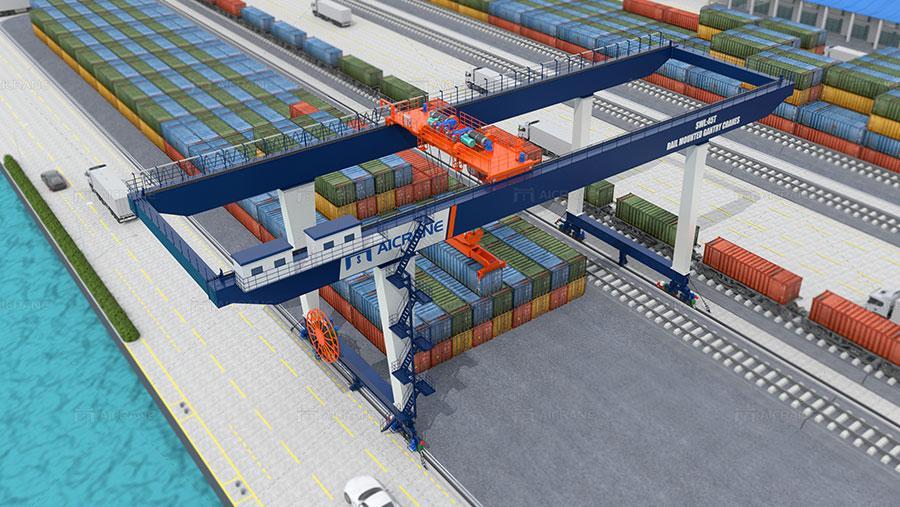
Why Gantry Crane Price Varies Based on Material Handling Needs
Le 30/04/2025
Gantry cranes, essential pieces of heavy lifting equipment used in various industries, are known for their versatility and ability to handle massive loads. They are designed to lift, move, and transport heavy materials across factories, construction sites, shipping yards, and warehouses. However, when it comes to purchasing a gantry crane, one of the most significant factors that can impact its cost is the material handling requirements of the specific application. The price of a gantry crane can vary widely depending on the type of materials it needs to handle, the required lifting capacity, and the operating environment. This article will explore why gantry crane prices vary based on material handling needs and the factors that contribute to these price fluctuations.
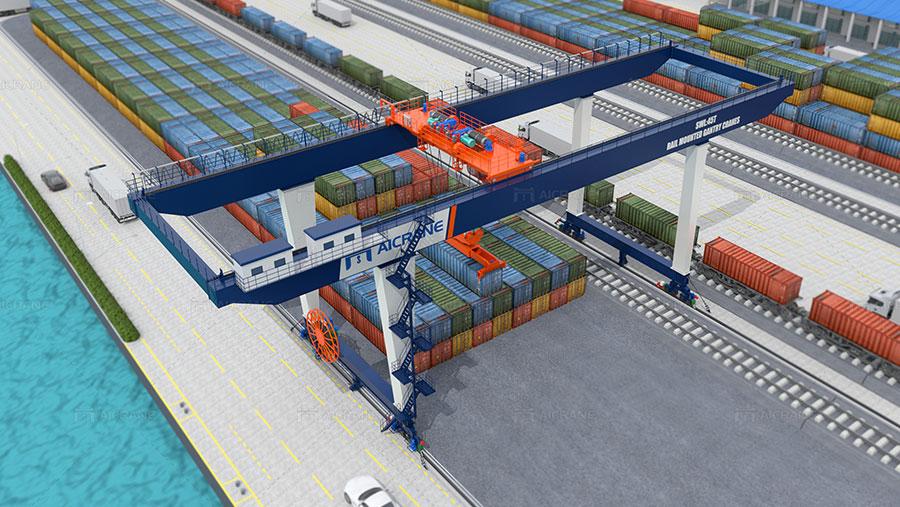
1. Load Capacity: The Foundation of Price Variation
The most obvious factor that affects the gantry crane price is its load capacity. Gantry cranes come in different weight ranges, and the lifting capacity is often directly proportional to the price of the crane. A crane with a higher load capacity typically costs more because it requires more robust materials, a stronger frame, and more advanced engineering to safely lift and move heavier objects.
Light-duty gantry cranes, typically used for lifting smaller materials or light to moderate loads, are less expensive. These cranes might have a lifting capacity of 1 to 10 tons and are ideal for applications such as small workshops, warehouses, or repair yards.
Heavy-duty gantry cranes, designed for industrial operations like steel mills, construction sites, or ports, can handle 100 tons or more. These cranes come with heavier-duty components, including reinforced beams, more powerful motors, and specialized hoisting mechanisms. Naturally, these features add to the cost.
Material handling needs that involve particularly heavy, bulky, or delicate materials often require gantry cranes with higher load capacities. For example, a crane used to transport large steel beams or ship components will be significantly more expensive than one used for smaller, lighter items. The greater the weight of the material that the crane needs to lift, the higher the design and manufacturing costs.
2. Type of Material Being Handled: Tailored Features for Specific Materials
Different materials have different handling needs. Gantry cranes designed for specialized tasks, such as lifting hazardous materials, oversized components, or extremely delicate items, come with unique features and equipment. These specialized needs influence the design, materials, and ultimately the price of the crane.
For example, cranes used in the steel industry need to have features that allow them to lift hot, heavy steel plates or coils. These cranes may include additional safety features such as heat-resistant coatings or specialized lifting attachments, which add to the overall cost.
Cranes used in the aerospace industry often require precision and delicate handling of aircraft components. The materials used in these cranes are designed to reduce the risk of damaging expensive parts, which can increase the price.
Handling hazardous materials such as chemicals or flammable substances requires gantry cranes equipped with specific safety features, such as explosion-proof motors, anti-static systems, and corrosion-resistant materials. These special features raise the price of the crane compared to standard cranes used for less sensitive applications.
When a gantry crane is designed to handle specific materials, the manufacturer must account for the properties of those materials, which leads to a more customized, and therefore more expensive, solution. For instance, cranes designed for concrete casting or for use in bulk material handling will have different specifications compared to those used in shipping ports for container handling.
3. Operating Environment: Outdoor vs. Indoor Use
The operating environment of a gantry crane significantly influences its design, which directly impacts its price. Gantry cranes that are used in harsh or outdoor environments require additional features to ensure their durability and reliability. For example:
Outdoor gantry cranes used in shipyards, construction sites, or port facilities need to be built with weather-resistant materials to withstand harsh conditions, such as rain, snow, extreme temperatures, and corrosive environments. The cost of materials and components needed to make these cranes weatherproof or resistant to corrosion will naturally drive up the price.
Indoor gantry cranes, on the other hand, generally have fewer environmental considerations. These indoor gantry cranes may not need to be as robust in terms of weatherproofing, but they may require additional safety features or quieter operations to meet specific workplace standards, particularly in environments where workers are close to the crane.
The climate and weather conditions in which the crane will be used also play a significant role in the price. For example, cranes used in high-humidity coastal regions may require additional corrosion-resistant coatings, which add to the cost. Similarly, if a crane is to be used in an extreme cold environment, it may require special components that prevent the machinery from freezing or malfunctioning, which increases the price.
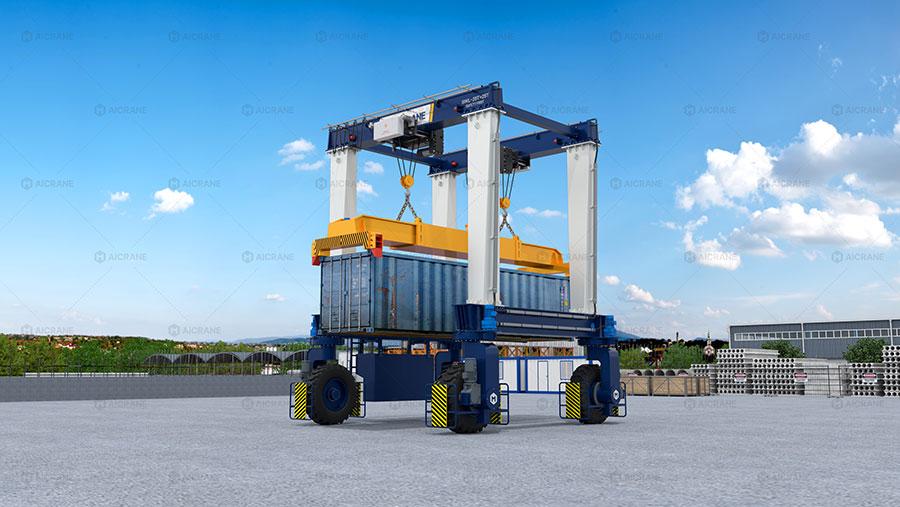
4. Lifting Height and Span: Additional Costs for Custom Features
In addition to the load capacity, the lifting height and span of a gantry crane are crucial factors that impact its price. The lifting height is the vertical distance the crane can lift its load, and the span refers to the horizontal distance between the crane’s support legs.
Cranes with a large span and high lifting height require more complex designs, additional engineering, and stronger materials to ensure stability and safety. These features can significantly raise the cost, especially when tailored to specific material handling requirements.
Custom gantry cranes designed to fit specific buildings, spaces, or material handling needs often come with a higher price tag. For example, a crane designed to handle oversized construction beams in a narrow factory space may need a unique span or height adjustment that requires extra fabrication and custom engineering.
5. Automation and Technology: High-Tech Cranes for Modern Demands
As industries continue to embrace automation, the integration of technology into gantry cranes has become a significant factor in determining their price. Cranes with automated features, such as remote control, automatic load positioning, and intelligent load monitoring systems, come with higher initial costs. These technological advancements improve the efficiency and safety of material handling processes but also raise the price of the crane.
Automated gantry cranes are often used in industries that require high throughput and precision, such as in container terminals or automated warehouses. The complexity of these systems requires more advanced sensors, software, and controllers, all of which contribute to the higher price.
Technology-driven safety features, such as anti-collision sensors, overload detection, and precise load control, are increasingly being added to cranes to improve safety and operational efficiency. These features, while beneficial, can also add to the overall price.
6. Customization and Specialized Design: More Specific Requirements, Higher Cost
Customization is another major factor that affects the price of gantry cranes. While standard gantry cranes may come at a relatively lower cost, a crane that is customized to meet the specific material handling needs of a business will be significantly more expensive.
For example:
Customized lifting attachments like spreader bars or lifting beams designed to handle specific types of loads (such as barrels, containers, or irregularly shaped components) can increase the cost.
Non-standard features like additional hoists, custom-built tracks, or unique control systems also drive up the price, as they require specialized parts and design expertise.
7. Maintenance and After-Sales Service: Additional Considerations
Finally, after-sales support and maintenance services can play a role in determining the overall cost of a gantry crane. Cranes that are designed to handle materials in heavy-duty or high-risk environments may come with extended warranties or additional maintenance packages to ensure they continue operating efficiently and safely. These add-ons can significantly affect the total price.
Conclusion
The price of a gantry crane is influenced by a multitude of factors that are directly tied to the material handling needs of a business. Whether it’s the load capacity, the type of materials being lifted, the operating environment, the height and span requirements, or the need for specialized features and technology, each aspect adds to the overall cost. When choosing a gantry crane, businesses need to assess their specific material handling requirements carefully to determine the most appropriate crane for their needs and budget.
In summary, while the initial price tag of a gantry crane may seem steep, understanding the material handling requirements and how they influence the design and features of the crane can help businesses make informed decisions. Investing in the right crane for the job is not just about cost—it’s about ensuring long-term performance, safety, and efficiency in the material handling process.
Tailored Design of RMG Cranes for Container Handling: Enhancing Efficiency and Precision
Le 25/04/2025
In the world of modern logistics, container handling plays a crucial role in ensuring the smooth operation of ports, shipping yards, and container terminals. As container handling demands continue to grow in terms of volume and efficiency, the use of Rail-Mounted Gantry (RMG) cranes has become indispensable. These cranes are specialized for loading and unloading containers from trucks, trains, and ships. One of the standout features of RMG cranes is their ability to be tailored to meet the specific needs of a port or terminal, optimizing their performance and ensuring operational efficiency. This article explores the importance of tailored design in RMG cranes, discussing how custom features can enhance container handling operations and improve safety, productivity, and cost-effectiveness.
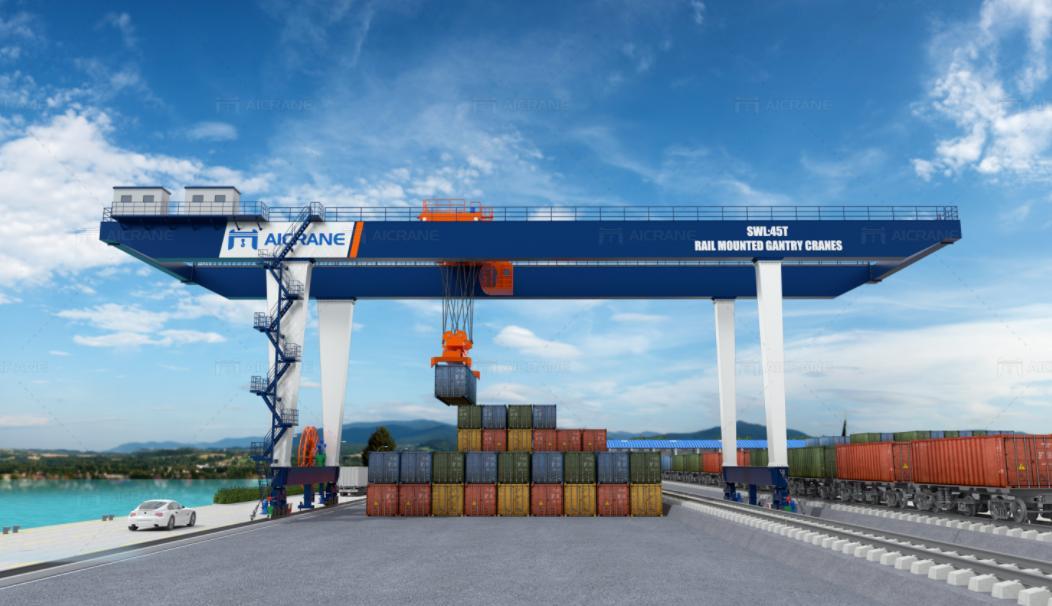
The Importance of RMG Cranes in Container Handling
RMG cranes are commonly found in container yards and ports, where they are responsible for stacking and retrieving containers from the ground or moving them to and from railcars and trucks. These cranes are mounted on rails, which provide a stable and controlled movement along the yard, allowing them to work with high precision. Their role is crucial, as they help manage large quantities of containers that need to be transported, stored, or loaded/unloaded with minimal delay.
Unlike traditional gantry cranes, which may be used for lifting other heavy loads in various industrial settings, rail mounted gantry cranes are specifically designed for container handling. They offer features such as adjustable spreaders, precise hoisting mechanisms, and advanced control systems to ensure containers are handled safely and efficiently. The demand for higher throughput, reduced operation costs, and minimal environmental impact is driving the development of tailored RMG cranes for specific applications.
The Benefits of Tailored Design
1. Optimized Performance for Specific Applications
One of the primary reasons for opting for a tailored design for RMG cranes is the ability to optimize the crane for specific operational needs. Container terminals face various operational challenges based on factors like layout, available space, and the types of vessels or cargo they handle. By designing RMG cranes that are tailored to the unique requirements of the terminal, businesses can ensure that their equipment will perform optimally.
For example, a terminal with limited space may require an RMG crane that offers a smaller footprint but can handle heavy-duty operations. Alternatively, a terminal handling oversized containers may need a crane with specialized lifting mechanisms and extended reach capabilities. Tailored design ensures that the crane is built with the right features to meet the particular demands of the facility.
2. Increased Throughput and Efficiency
Container handling operations can benefit greatly from custom-tailored RMG cranes, particularly in terms of improving throughput and reducing cycle times. By adjusting key design elements like the lifting height, span, and speed of the crane, manufacturers can create RMG cranes that are better suited to the specific operations of a terminal.
For example, a port that primarily handles small to medium-sized containers might require an RMG crane that is optimized for faster lifting speeds and quicker turnaround times. On the other hand, terminals handling larger containers may need a crane designed for greater lifting capacity and additional hoisting precision. Customizing the crane's specifications can help increase throughput and reduce the time needed for each container move, resulting in better overall efficiency.
3. Enhanced Safety Features
Safety is paramount in any crane operation, and this is especially true for container handling, where heavy lifting is involved. Tailored RMG cranes can be designed with additional safety features that address specific hazards in the terminal environment. These features might include improved anti-sway systems, load monitoring technologies, and enhanced braking systems.
Anti-sway technology, for example, helps minimize the swinging of containers during hoisting, preventing accidents and reducing the risk of damage to both the container and the crane. In addition, load monitoring systems ensure that containers are lifted within the crane's safe working load limits, protecting both the equipment and the workforce.
By tailoring the crane’s safety features to the unique conditions of the terminal, it is possible to mitigate risks and enhance operational safety.
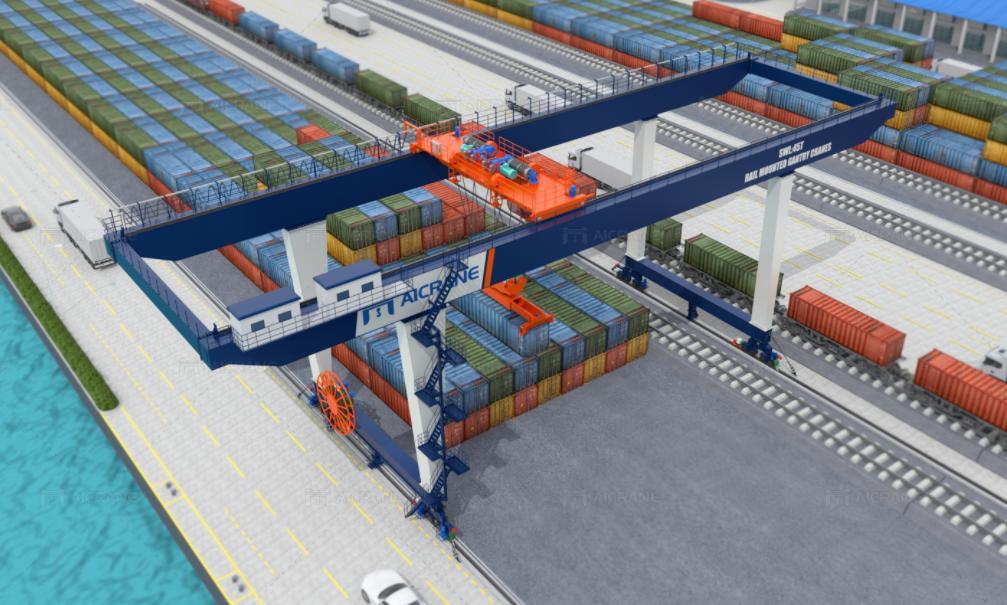
4. Cost-Effectiveness and Energy Efficiency
Tailoring RMG cranes to meet the specific needs of a terminal can also have significant cost benefits. When cranes are designed with efficiency in mind, they can reduce energy consumption and minimize operating costs. For example, an RMG gantry crane for container handling designed to handle lighter loads at a faster pace may be built with energy-efficient motors and drive systems to reduce electricity usage, making the crane more cost-effective over time.
Moreover, customizing the crane's design allows businesses to avoid the expense of over-specifying equipment. A terminal that does not require the highest lifting capacity or the longest span can save money by opting for a more appropriately sized crane, reducing both upfront capital investment and maintenance costs.
5. Flexibility for Future Growth
Container terminals are dynamic environments that often experience fluctuations in demand, changes in cargo types, and the introduction of new technologies. One of the key advantages of designing RMG cranes with tailored features is the flexibility to adapt to future requirements.
For example, a crane can be equipped with modular components that allow for easy upgrades as operational needs change. This could include the addition of new hoisting systems, increased lifting capacity, or the ability to handle different types of containers as the terminal evolves. By planning for future growth, businesses can ensure that their RMG cranes continue to meet their needs for years to come.
Key Design Elements for Tailored RMG Cranes
Several key design elements should be considered when customizing an RMG crane for container handling:
1. Lifting Capacity
The lifting capacity is one of the most critical design factors for an RMG crane. It determines the weight of the containers the crane can lift, and ensuring that the crane has the correct capacity for the terminal's typical loads is essential. A crane with too high a capacity may be more expensive and inefficient, while one with insufficient capacity may struggle to handle larger containers, leading to operational delays.
2. Span and Lifting Height
The span of the crane determines how far it can reach across the yard, while the lifting height dictates how high it can raise containers. Tailoring these dimensions ensures that the crane can effectively cover the terminal’s layout and stack containers at the required height. The crane’s reach must be aligned with the container storage configuration to avoid unnecessary congestion and optimize yard space utilization.
3. Control Systems and Automation
Incorporating advanced control systems into RMG cranes is another key area for customization. Modern RMG cranes often come equipped with automated or semi-automated features that reduce human error and improve efficiency. These systems include GPS tracking, load measurement sensors, and remote operation capabilities. Automation can also streamline processes such as stacking containers, enhancing throughput and reducing labor costs.
4. Stability and Anti-Sway Systems
RMG cranes can experience instability when lifting containers, especially during high winds or with large loads. Tailoring the crane’s stability system to meet the unique environmental conditions of the terminal is essential. Anti-sway systems, along with advanced load monitoring and stability enhancements, can ensure smooth and safe container handling in challenging conditions.
5. Environmental Considerations
As environmental concerns become more pressing in industrial settings, many container terminals are opting for energy-efficient RMG cranes. Customization can include the selection of low-emission power sources, energy-saving motors, and eco-friendly materials in the crane’s design. Additionally, the use of electric-powered cranes instead of diesel-powered ones can significantly reduce a terminal’s carbon footprint and operating costs.
Conclusion
Tailoring the design of RMG cranes for container handling is a strategic approach that can greatly enhance the operational efficiency, safety, and cost-effectiveness of a terminal. By considering factors such as lifting capacity, span, hoisting mechanisms, control systems, and automation, businesses can create cranes that are optimized for their specific needs. The ability to customize key design elements ensures that RMG cranes can adapt to the changing demands of the container handling industry, providing long-term benefits for both port operators and clients. As container handling technology continues to evolve, the importance of tailored crane design will remain a critical factor in maintaining competitive advantage and operational excellence in the global logistics landscape.
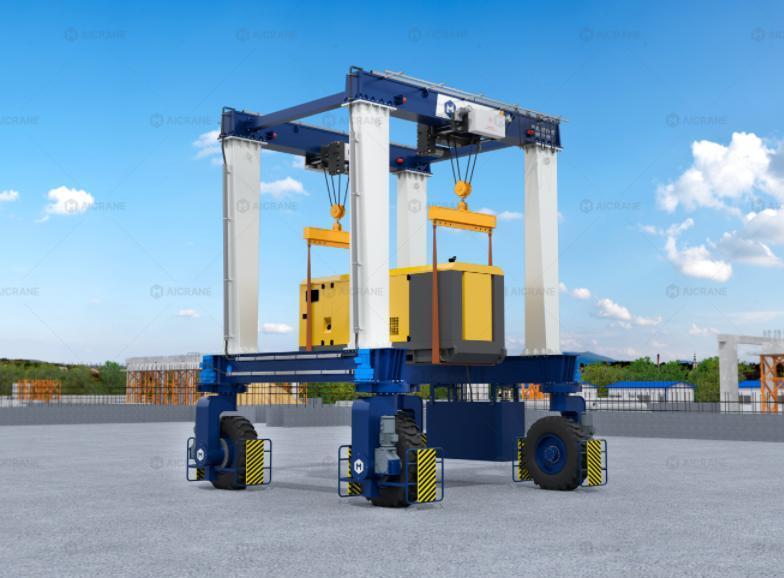
Innovations in Rubber Tyred Gantry Crane Frame Design
Le 24/04/2025
Rubber Tyred Gantry (RTG) cranes have become a fundamental part of the modern logistics and port industries, providing flexible and efficient solutions for container handling. These cranes are particularly beneficial in environments where mobility and versatility are critical. They are capable of moving freely along tracks or designated paths without the need for a fixed foundation, making them ideal for port terminals, warehouses, and construction sites. As industries demand higher efficiency and performance, the design of RTG crane frames has seen significant innovations in recent years.
In this article, we will explore some of the latest innovations in rubber tyred gantry crane frame design, focusing on the materials used, structural enhancements, and technological advancements that are shaping the future of these essential machines.
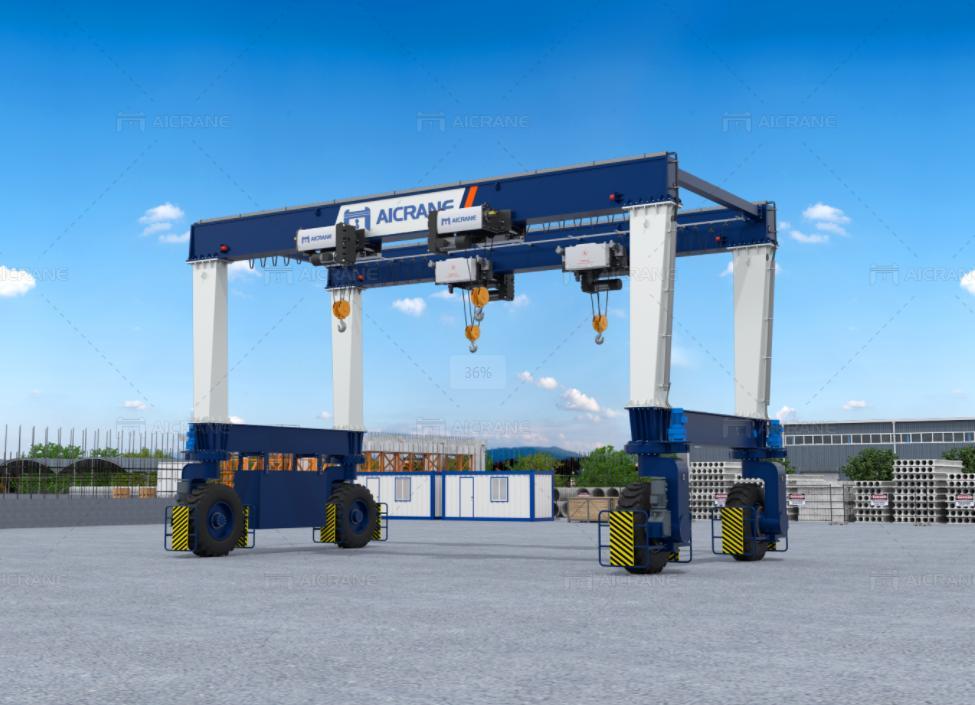
1. Lightweight and High-Strength Materials
One of the most significant innovations in RTG crane frame design has been the development and incorporation of lightweight, high-strength materials. Traditionally, crane frames were made of heavy steel, which, while strong, added substantial weight to the crane. This weight impacts not only the mobility of the crane but also its fuel consumption and overall efficiency.
Recent advancements in material science have led to the development of advanced steel alloys and composite materials that offer a higher strength-to-weight ratio. These materials are designed to withstand the intense forces and stresses exerted on crane frames during lifting and transportation, while reducing the overall weight of the crane. As a result, the crane becomes more fuel-efficient, requiring less power to operate, and it can also handle heavier loads without compromising stability.
Some manufacturers have also started experimenting with aluminum alloys in non-structural parts of the crane, further reducing weight without sacrificing performance. The use of these lightweight materials has enabled RTG cranes to achieve greater lifting capacities and improved maneuverability.
2. Modular and Flexible Frame Designs
The increasing demand for customizable and scalable RTG cranes has driven the trend toward modular frame designs. Modular RTG cranes offer the advantage of flexibility, allowing the crane frame to be easily adapted to different operational needs and environmental conditions. The ability to configure the frame in a modular fashion also allows for easier repairs and maintenance.
Modular frame designs typically consist of pre-fabricated components that can be assembled on-site. These components can include base frames, wheel structures, cross beams, and lifting gloves, all of which can be interchanged or upgraded as needed. For example, if a port terminal needs to increase the lifting capacity of its RTG cranes, additional components can be added to the existing frame, such as larger lifting arms or more robust wheel systems, without requiring a complete overhaul of the machine.
Furthermore, the modular approach allows manufacturers to offer customizable RTG cranes that can be tailored to meet specific operational requirements, such as different container sizes, lifting heights, or travel distances. This flexibility is crucial in environments where container handling needs can vary greatly.
3.Enhanced Stability and Safety Features
As RTG cranes are used in environments that often involve uneven ground conditions and variable weather, ensuring stability is paramount. Recent innovations in frame design have focused on improving crane stability, especially during lifting operations.
One such innovation is the development of advanced anti-sway systems that work in tandem with the crane's frame structure. These systems help to reduce the swinging motion of the load, ensuring that the crane remains stable and that the load is safely and precisely positioned. Anti-sway technologies are integrated into the crane frame through sophisticated sensors and control systems, which monitor the crane's movement in real-time and adjust the crane's actions to minimize sway.
Additionally, improvements in the wheel and axle design have contributed to the stability of RTG cranes. Modern RTG cranes feature advanced wheel systems with high-torque motors, which distribute the load more evenly and reduce the stress on individual wheel assemblies. This not only improves the crane's stability but also enhances its longevity, as the load is shared across more points of contact.
Some cranes also incorporate a load-sensing system in the frame, which helps operators determine if the mobile gantry crane is lifting a load that exceeds its designed capacity. If the crane is overloaded, the system will trigger a warning or automatically adjust the lifting speed to prevent damage to the crane or injury to workers.
4. Smart Crane Frame Technology and Automation
Incorporating smart technologies into the frame design has been one of the most transformative innovations in RTG crane development. Smart technologies have the potential to improve the efficiency, safety, and overall performance of RTG cranes by providing real-time data about the crane's operation and condition.
For example, modern RTG cranes are now equipped with IoT sensors embedded within the frame. These sensors monitor critical aspects of the crane's performance, including load weight, wheel wear, engine temperature, and hydraulic pressure. This data is transmitted to a central control system, where it can be analyzed to detect any potential issues before they become serious problems. Predictive maintenance models, driven by this data, enable operators to carry out repairs and maintenance only when necessary, reducing downtime and operating costs.
Another exciting development is the use of automation in RTG cranes. Fully autonomous RTG cranes are now being tested and deployed in ports around the world. These cranes are designed to move containers and perform lifting operations without human intervention. The frame of these cranes is equipped with a suite of sensors and cameras that allow the crane to navigate the terminal and interact with other machinery autonomously. This innovation has the potential to revolutionize the port industry by increasing efficiency and reducing human errors.
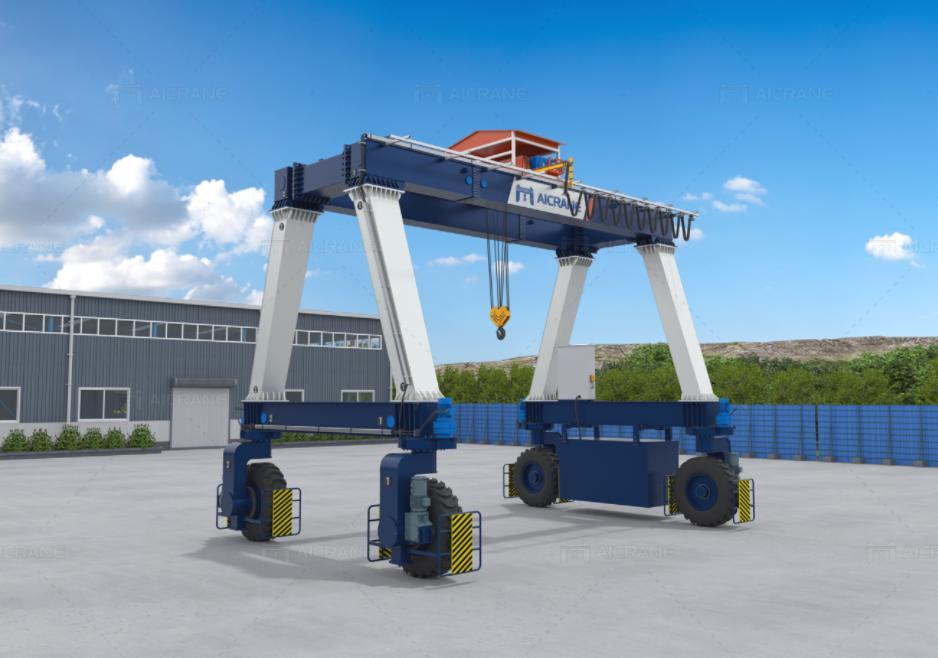
5. Energy-Efficient Designs
As the global focus on sustainability and energy conservation intensifies, energy-efficient designs have become a key consideration in RTG crane frame development. The modern RTG crane is expected not only to perform efficiently but also to minimize its environmental impact.
One of the key innovations in energy efficiency is the integration of hybrid or fully electric power systems. Traditionally, RTG cranes relied on diesel engines, which contributed to high fuel consumption and emissions. However, newer models now feature hybrid engines that combine diesel with electric motors, allowing the crane to switch between fuel types depending on the task. For example, during low-load operations, the crane may rely solely on electric power, reducing fuel consumption and emissions.
Electric RTG cranes have also seen improvements in their frame design to accommodate high-voltage batteries and power management systems. These cranes can be charged via an overhead power supply or through a battery swapping system, further reducing their environmental footprint. This shift toward electric power not only contributes to sustainability but also reduces operating costs over the long term.
6. Corrosion-Resistant Frame Coatings
The exposure of RTG cranes to harsh environmental conditions—such as saltwater, extreme temperatures, and heavy rainfall—can cause corrosion over time. To combat this, manufacturers have introduced advanced corrosion-resistant coatings for crane frames.
These coatings are designed to protect the metal components of the crane from rust and deterioration, extending the crane's lifespan and reducing the need for frequent maintenance. Innovations in this area have led to the development of coatings that not only resist corrosion but also enhance the crane's aesthetic appearance, making them more durable and attractive for long-term use.
Conclusion
Innovations in Rubber Tyred Gantry crane frame design have dramatically improved their performance, safety, and efficiency. The introduction of lightweight materials, modular designs, enhanced stability features, smart technology, energy-efficient systems, and corrosion-resistant coatings has positioned RTG cranes as a cornerstone of modern container handling. These innovations are not only addressing the growing demand for higher capacity and performance but are also helping to ensure that RTG cranes meet the evolving needs of the global logistics and port industries in a sustainable and cost-effective manner.
As the industry continues to innovate, it's clear that the future of RTG cranes will be defined by smarter, more efficient, and environmentally friendly designs. Manufacturers who embrace these advancements will be well-positioned to meet the needs of an increasingly competitive and eco-conscious market.